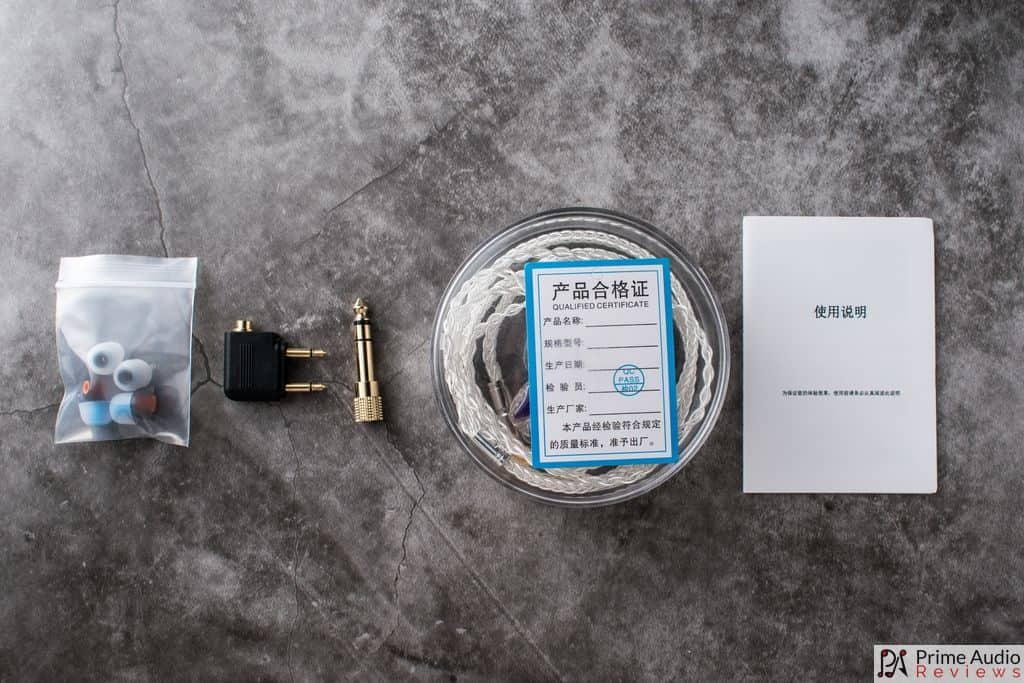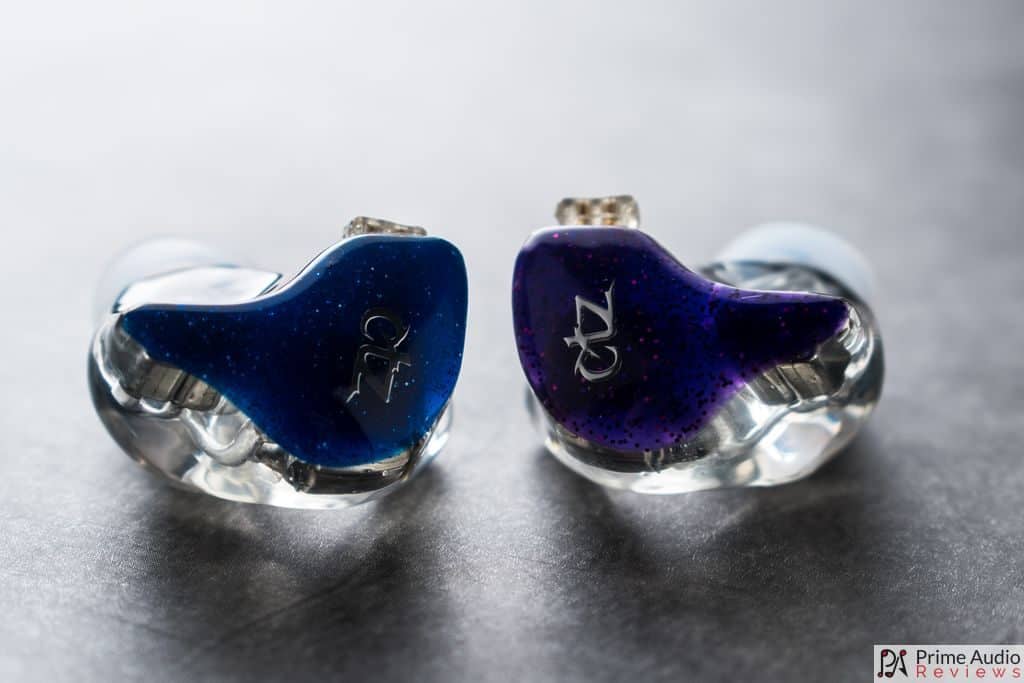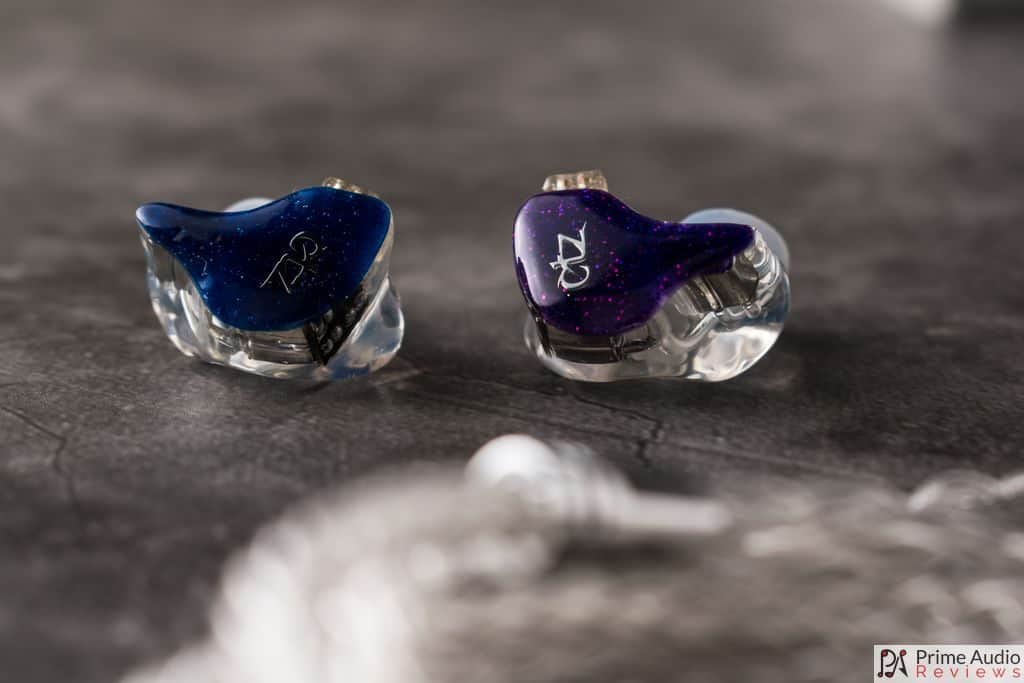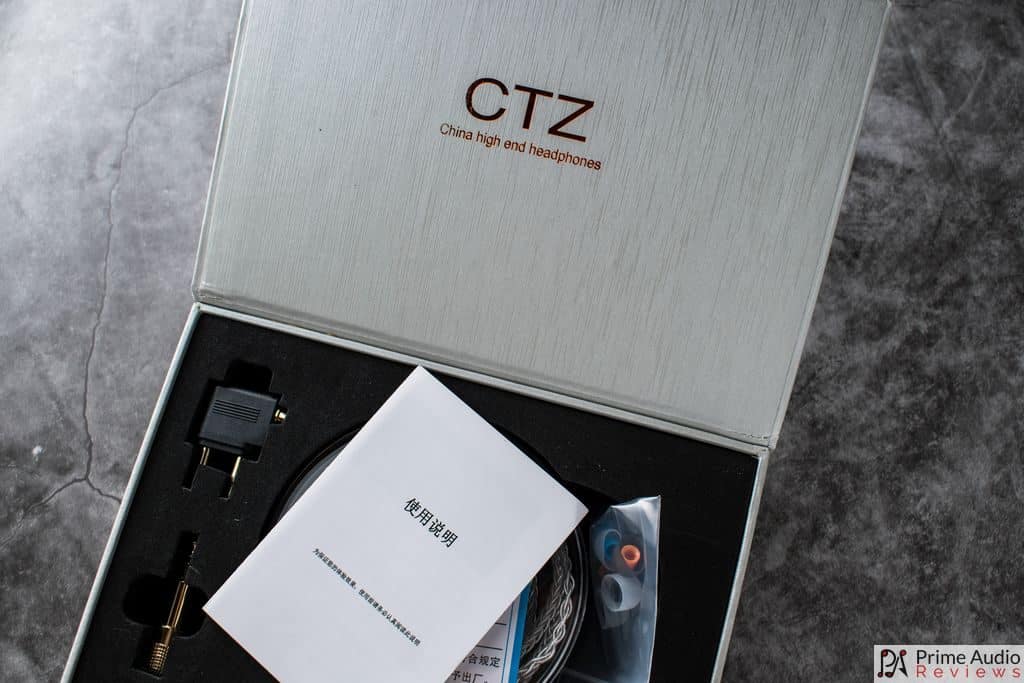Hey there fam. In today’s review, we take a look at the CTZ-6, a multi-BA in-ear monitor with 6 balanced armatures per side. CTZ is a Chinese manufacturer known for making IEMs with large driver counts (up to 21 per side!). Apart from that, I wasn’t able to find any other information about the company so let’s just dive right into the review.
- Excellent build quality
- Really nice included cable
- Transparency and instrument separation
- Value for money
- No proper carrying case
- Limited selection of eartips provided
Specifications
- Impedance: 16Ω
- Headphone sensitivity: 128dB
- Frequency range: 20-20000 Hz
- Interface: 3.5mm
- Driver: 6BA
This sample was provided for the purpose of an honest review. All observations and opinions here are my own based on my experience with the product.
Packaging and Accessories
The earphones were delivered in a light grey box with a magnetic flap. The box has a textured surface, kind of similar to gift wrapping and is otherwise bare except for a large CTZ printed in reflective orange on the top.
Inside we find the earphones and accessories all seated within a black foam cutout. Let’s have a look at what you get in total.
- CTZ-6 in-ear monitors
- Detachable 2-pin cable
- 3 pairs of silicone eartips (S, M, L)
- Airline adapter
- 3.5mm to 6.35mm adapter
- Warranty card
I have mixed feelings about the provided accessories. First of all, the supplied eartips are really tiny. I imagine even the largest ones would be too small for a lot of people because they’re more like a common medium size.
I think CTZ could drop the adapters in favour of adding a proper carrying case or at the very least a decent selection of eartips. The plastic container that the IEMs come in is pretty useless unless you want to keep your earphones on the shelf like a museum display or need an extra Petri dish for your mad scientist experiments.

Build Quality and Design

The shells are smaller than I expected for a 6-BA monitor. The CTZ-6 is very similar in size and shape to the TenHz P4 Pro (review here) and the FiiO FA1 (review here) which only has a single BA driver.
In terms of build quality, the CTZ-6 is outstanding. The shells are made of a highly transparent, non-toxic, environmentally friendly resin. You can clearly see through the shells which show no signs of bubbles or other imperfections.
Inside the body, everything is neat and tidy; all the wiring and sound tubes are mirrored exactly on the left and right sides which suggests a very refined manufacturing process. The nozzles are metal and have a solid ridge on them that helps to hold the eartips in place securely.
The faceplates have a sparkly, glittery finish and have CTZ printed in silver in the center. Where the faceplate joins the shells there is no seam; in other words, the bodies are one single piece of resin with the exception of the metal nozzles.

Cable
The included braided cable is really nice. It’s very similar to the Tin Audio T3’s excellent cable but it’s a little firmer and white in colour. At the top are the aluminium MMCX connectors which are extremely lightweight and colour coded (red ring for the right, blue ring for the left).
There are pre-formed ear guides which are very flexible and comfortable on the top of your ears. Further down is a silicone cable cinch, followed by a small, lightweight aluminium Y-split. The cable terminates in a right-angled aluminium plug which is quite chunky but also happens to be a lot lighter than it looks.
Overall this is a really gorgeous cable that is also highly functional. There is very minimal microphonics and it feels solid and durable.

Comfort and Noise Isolation
I find the CTZ-6 to be exceptionally comfortable and can wear these earphones for hours at a time. The earpieces are smooth with rounded edges all over and they’re shaped to sit naturally in the ears. Anyone who has tried the TenHz P4 Pro or Hifi Boy OS V3 will know what to expect in regards to the fit of the CTZ-6.
Noise isolation is above average due to the solid and non-vented IEM body. The earpieces fill in the concha of your ears and block a substantial amount of external noise. Likewise, noise leak is definitely not something you need to be concerned with.

Sound
Gear used for testing includes the FiiO M6 and Acoustic Research AR-M20 for portable use. On the desktop, I tested with the FiiO K3 which is connected to my PC via USB.
In general, the sound of the CTZ-6 is neutral and balanced with a slight bump in the upper midrange. It has good clarity but what really stands out is the resolution and instrument separation. There’s nothing “in your face” about the CTZ-6’s sound; it has a very refined and mature sound signature with fast transients, tight bass, honey midrange and smooth, airy treble.

Bass
Bass is neutral but given the right recording can actually give a satisfying punch. Because of the neutrality of the mids and treble, the bass doesn’t need to be big to make an impact. While the mid-bass is light it does carry lots of texture. It’s worth noting that the lightness is not because of note thinness; they’re sufficiently thick, it’s just that the overall quantity is very modest.
Sub-bass extends well but is rather light in quantity. You can hear the sub-bass notes but they don’t carry much authority and certainly won’t make your teeth rattle. Rather than being a limitation of the balanced armature drivers (as commonly found in single BA IEMs) in this
Mids
The CTZ-6 midrange is free of any mid-bass bloat but fortunately, it’s not lacking body either. The midrange is defined by its natural tone and cleanliness. It’s a very pure midrange that is still engaging and musical.
What makes the mids stand out here is the transparency the CTZ-6 provides. This is a highly resolving IEM that is able to reveal all the nuances of a recording and keep the sound natural at the same time. Although the notes are fairly lean they have a natural decay which helps to maintain body.
Treble
The CTZ-6 treble comes across with a linear evenness. Lower treble is crisp and articulate with just the right thickness to maintain solidity but it has some fuzziness around the edges that give it a shimmering airiness.
It’s not an ultra-detailed treble but it’s smooth and effortless. To top things off, there’s no hint of sibilance nor is the treble in any way fatiguing.
Soundstage
The soundstage is fairly intimate which is surprising considering the lightness of the bass because the two are intricately relative in most cases i.e. more bass usually means a less expansive stage.
Vocals are fairly close, as if you’re sitting just a few feet away from the artist. It’s not uncomfortably close though and feels like a large room. The stage is well-rounded, it has roughly the same amount of width and depth, along with an above average sense of height.
Comparisons
TenHz P4 Pro (4BA $150)
As far as build goes, there’s very little separating these two multi-BA IEMs. The most notable difference in build is the CTZ has aluminium nozzles while the P4 Pro is made from a single lump of resin. One advantage of the CTZ is its noticeably superior cable which looks and feels much more premium.
The P4 Pro has more upper and mid-bass and just a hint more sub-bass. This will probably sound more familiar to most people than the neutral bass tuning of the CTZ-6. Both are similar in bass quality and the main difference is the quantity.
There is more body to the P4 Pro’s midrange and it’s upper midrange is more emphasized. The P4 Pro extends further in the treble but it’s only in the extreme high range which will be inaudible to most people. The CTZ-6, on the other hand, has a more even treble with slightly better timbre.
Having more drivers never automatically means an IEM will be better but in this case the CTZ-6 has better instrument separation and resolution. It’s (the CTZ) also smoother in the upper mids and lower treble.
Both of these in-ear monitors are great value for money. The P4 Pro offers a proper (and very nice) carrying case while the CTZ-6’s cable is a big step up in quality. While the P4 Pro’s sound signature might appeal to more people, my preference goes to the CTZ-6.
KZ BA10 (5BA $67)
The BA10 is like KZ’s uber talented bastard child that sounds great but has some awkward design choices (the angled connectors and memory wire make a proper fit literally impossible for me). However, with a third-party cable and the right
First of all, the BA10 bass is boosted well-north of neutral with a sub-bass that hits way harder than most entry-level multi-BA monitors. Mix with this a midrange that has to compete with a much more aggressive bass and treble at the same time making it sound recessed in comparison.
The BA10’s lower treble is more emphasized which gives it extra clarity but adds some edginess as well. In comparison, the CTZ-6 has a more refined treble with more accurate and smoother timbre. KZ’s current multi-BA flagship sounds a bit rough next to the CTZ but then you need to keep in mind that it’s less than half the price.

Conclusion
The CTZ-6 is certainly a very interesting IEM and one that I found more difficult than usual to put into words. Often when there’s a neutral bass tuning, the overall tonality can become bright or sound anaemic or lacking body as a result but that’s not the case here. The CTZ-6 maintains a natural tone and note density despite the lightness of the bass.
It’s a gorgeous looking, well-built monitor that comes with an exceptional cable and despite the lack of other accessories is still very good value for money.
I’d warn that this type of tuning won’t suit everyone. If you’re just looking for something with a typical consumer sound i.e. good bass, good vocals etc. then this might not be the best choice for you. However, if you’re familiar with in-ear monitors and different sound signatures then this one is really worth checking out.






